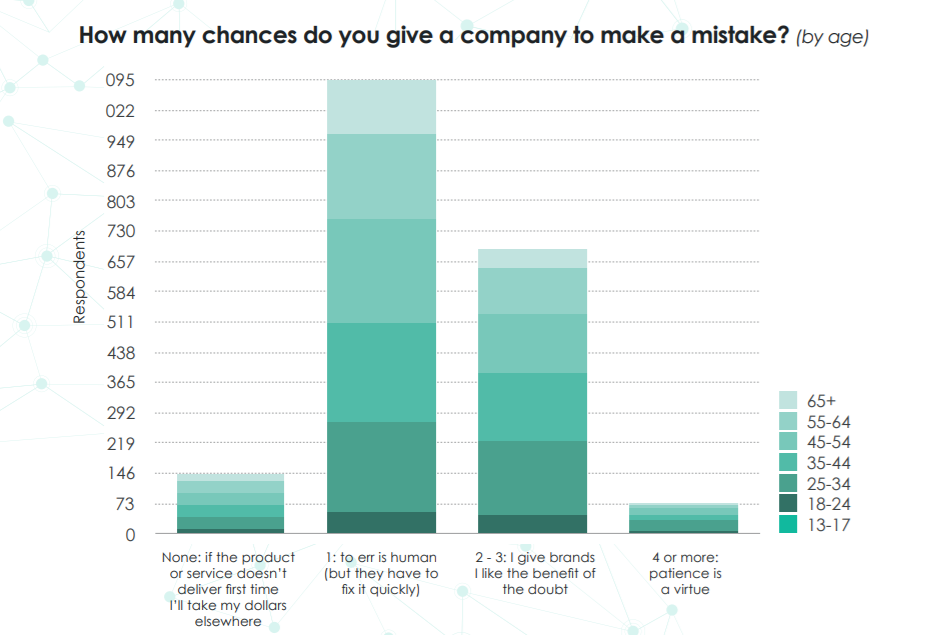Content Strategy
Is the Hierarchy of Consumer Needs the Key to Understanding Your Audience?
By Kyle Harper on May 1, 2018
Whether you have a PhD in consumer psychology or just watched a weekend marathon of wilderness survival shows, you're likely familiar with Maslow's hierarchy of needs. This hierarchy-first proposed in a 1943 paper titled "A Theory of Human Motivation"-set out to categorize human behavior on an individual level, in an order of priorities from survival to comfort. It's a relatively simple concept that presents a lot of complexity in the details.
To some extent, marketers understand this hierarchy intuitively. We use communication to signal what sort of needs our brands helps satisfy and various tactics to identify target audiences who have (or think they have) that need. Even before Maslow's research, these needs have served as an unspoken foundation for how brands communicate with their customers.
But it appears that the hierarchy may be shifting, at least where marketing is concerned.
The Case for Convenience
Central to Maslow's hierarchy is the idea of scarcity-the things we need for survival and comfort range from accessible and easy to find at the bottom to restricted and difficult to access at the top. As you move further up the hierarchy, there's more capacity to expend resources on the "wants" of life, so long as you've satisfied the "needs." But what happens when you mess with scarcity?
Marketers today speak to audiences with more information at their fingertips than the rest of human history has ever had access to combined. Our audiences pay for on-demand subscriptions to highly segmented entertainment. They order items off of Amazon with overnight or even same-day shipping. Scarcity, in most cases, is not the key driver that it used to be.
In Q1 of 2018, location-based data company Blis conducted a survey of 2000 customers to see how they thought about buying decisions in retail markets, and they found some large fundamental shifts.
Quality and price remain extremely important, filling out the hierarchy foundation. But it is curious to note that quality is the first consideration in buyer's minds, rather than affordability. Accessibility and convenience have become the strong center of the pyramid, signaling the influence of online buying and digital content on consumer priorities.
But at the top of the pyramid-the premium distinguishers that drive long-term brand loyalty, if not first buying decisions-are trustworthiness and morals.
From a content marketing perspective, your team is now a primary driver for either two or three levels of this pyramid. Morality, at the top, is primarily understood through your brand's communicated ideals and intentional actions, which more often than not your content team will be involved in. Perceived authenticity and trustworthiness are content marketing's bread and butter, using content to build trusting relationships with consumers to guide their long-term buying decisions.
In short-term communication, Blis found that consumers primarily value "promotional" communication, followed by "functional" communication (product tips, user guides, etc.). This mirrors the new foundations of the pyramid-audience members are looking to get the most out of their purchases (quality) and to be aware of potential buying opportunities (price). But in the long-term, consumers value brand transparency, narratives, and quick corrections of communication errors on the rare occasions they occur.
Shifting to Match Consumer Needs
With a new understanding of your audience's needs, content marketers can start taking some easy steps now to make themselves increasingly relevant for each stage of the hierarchy.
Define Your Customer's Life Stage
The longer an audience member remains engaged with your brand, the more they presumably move up the consumer hierarchy in terms of considering your brand. Making the length of your relationship with the consumer a consideration in your content strategy can be a powerful way to orient your content to the right people at the right time in their consideration of or dedication to your brand.
Make It Easier
While price and quality are important for consumers, they often determine those factors through the lens of convenience-consumers aren't comparing every product to each other, but rather those products that are most consistently visible in reviews and searches. This has obvious implications for SEO and UX design, but it also applies to content itself: Middle- and bottom-of-funnel content, like product guides and customer testimonials, should make it easy for buyers to satisfy questions of price and quality.
Consistency Is Key
Reliability underlies most of the conversations and sentiments that consumers share with brands today. Knowing what your brand represents, and then being able to believe that over time, is what will keep an audience dedicated to your work more than anything else. Narratives remain the most powerful way to tie your brand ideals and movements together over time, which makes story a key investment for your brand.
We often think about the changing face of technology and how it affects our marketing, but we have to remember that consumer needs and expectations change alongside technology. While Blis' study reveals some interesting shifts in how consumers make first buying decisions, it also reinforces what content marketers have always known: When it comes to motivating audiences over a long period of time, your brand's narrative becomes crucial for supporting and guiding your consumers on a personal level.
For more stories like this, subscribe to the Content Standard newsletter.
Featured image attribution: Eye for Ebony



